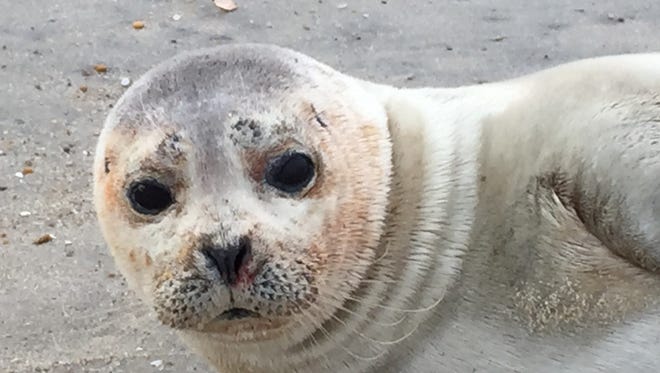Spot the seals on Delmarva

On one of the coldest days of the year, Paul Bradley walked across the dune at Middlesex Beach and spotted a young seal.
"It's the first time I've seen a seal in Delaware," said Bradley, of Wilmington.
Turns out seal sightings in Delaware and throughout the mid-Atlantic have become increasingly common. Some researchers believe it might be because the northern populations of some key species are rebounding and the young move away from colonies in search of food. Seals eat a wide variety of fish and crustaceans.
Suzanne Thurman, executive director of the Marine Education, Research & Rehabilitation Institute, the state's marine mammal response network, said seals typically start showing up on Delmarva right around Thanksgiving.
"Usually boaters see them at Lewes Harbor or on the Ice Breakers in Delaware Bay," she said.
The first reports are typically of seals — Delaware gets harbor seals, harp seals, gray seals and the occasional hooded seal — in the water but by January, the institute starts to get reports of seals on the beach or resting on boat docks, she said.
This year, they started hauling out of the water in December, Thurman said.
Often, they are just resting, she said. But sometimes they are hurt.
In one case earlier this year, the institute volunteers responded to three seals, all of which had wounds on their bellies. One of the seals was dead but the other two survived. While belly wounds might fit the description of a shark attack, they really aren't sure what happened in this instance, Thurman said. A partner rescue group in New Jersey saw similar wounds on some seals there and concluded they were not from shark bites, she added.
The collaboration between the rescue organizations is important, Thurman said, adding, "Sometimes we can piece together these mysteries."
On a recent Saturday, a harp seal was spotted resting on the ice at Roosevelt Inlet in Lewes. Very young harp seals have white coats, but this one was developing its adult coat, she said.

In the coming weeks, the institute will be preparing for an influx of gray seals, she said.
Some scientists believe that as the northeast population has recovered and expanded, the young and juvenile seals follow food south where there is less competition. Thurman said a mother seal, depending on the species, typically cares for her young from four days to six weeks. In large seal colonies, young seals can be victimized or injured by the large, adult males, Thurman said.
"The mothers push them out for their own wellbeing," she said.
If you spot a seal, leave it alone. Seals can be aggressive and may bite. Even if the animal appears healthy, contact the institute at 302-228-5029. Thurman said the organization likes to keep track of local seal sittings.